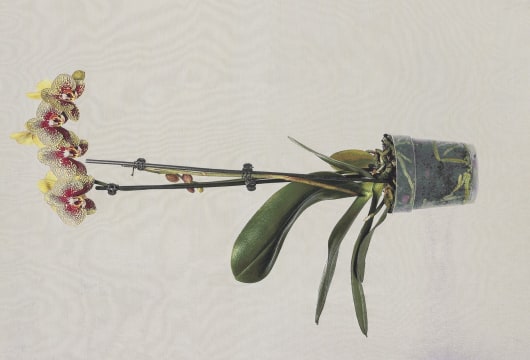
Liz Johnson Artur
Untitled
2016
C-print
20 x 24 in (51 x 61 cm)
Courtesy the artist
Kwame Brathwaite
Untitled (Photo shoot at a school for one of the many modeling groups
who had begun to embrace natural hairstyles in the 1960s)
c. 1966
archival pigment print
15 x 15 in (38.1 x 38.1 cm)
Courtesy the artist and Philip Martin Gallery, Los Angeles
James Barnor
NIFA NIFA
1974
Lambda print
27 3/5 x 27 3/5 in (70.1 x 70.1 cm)
Courtesy the artist and October Gallery, London
David Hartt
Interval XIII
2014
archival pigment print mounted to Dibond
50 1/2 x 36 in (128.3 x 91.4 cm)
David Hartt
Interval I
2014
archival pigment print mounted to Dibond
36 x 54 in (91.4 x 137.2 cm)
Zoe Leonard
One Woman Looking at Another,
1990
gelatin silver print
36 3/4 x 25 1/4 in (93.3 x 64.1 cm)
Courtesy the artist and Hauser & Wirth New York
Christopher Williams
Mustafa Kinte (Gambia)
Camera: Makina 67 506347
Plaubel Feinmechanik und Optik GmbH
Borsigallee 37
60388 Frankfurt am Main, Germany
Shirt: Van Laack Shirt Kent 64
41061 Mönchengladbach, Germany
Dirk Schaper Studio, Berlin
July 20, 2007, 2008
gelatin silver print
20 x 16 in (50.8 x 40.6 cm)
© Christopher Williams
Courtesy the artist; David Zwirner, New York/London
Liz Johnson Artur
Untitled, 2016
20 x 24 inch
51 x 61 cm
C-Type print
Edition of 6 + 2 AP
January 18 – March 10, 2018
Liz Johnson Artur
James Barnor
Kwame Brathwaite
David Hartt
Zoe Leonard
Christopher Williams
Though we may obsess about the past or the future, alternately consumed by all that is not, the primacy of the present forever asserts itself. We almost always believe that the times in which we live are the precipice to a cataclysmic fall, a tipping point to some greater tragedy, a moment when all can slip away and be lost. Ours is, as photographer David Hartt observed, “A crisis of borders, a fold in time, a rupture in space.”
With this in mind, Hartt sets out to curate a photography exhibition that speaks to our times. "This Synthetic Moment" at David Nolan, New York, brought together the works of Liz Johnson Artur, James Barnor, Kwame Brathwaite, David Hartt, Zoe Leonard, and Christopher Williams to explore, in Hartt’s words, “pictures of power and pride and grief and desire and confusion and community and celebration and abandonment.”
Closing this week is a hard-hitting group exhibition curated and featuring the works of David Hartt. The David Nolan Gallery is hosting Hartt and five other artists, as they explore migration and contemporary concerns, desires and rewards around the currently controversial subject. “This Synthetic Moment” runs at the gallery’s New York venue until March 10, 2018.
For "This Synthetic Moment," curator David Hartt presents photographs whose shared imperative is an interrogation of what he refers to as “a crisis of borders.” Through pictures — including one of black models taken in the ’60s but only printed last year, and another of a car bundled in blue tarp like a body bag — Hartt meditates on how both literal and abstract borders like place, time, and observation can affect meaning. In the exhibition, Hartt brings together a diverse collection of artists whose images illuminate the point at which what’s happening in the moment becomes art. Besides some of Hartt’s own photographs, featured artists include Kwame Brathwaite, Zoe Leonard, James Barnor, Liz Johnson Artur, and Christopher Williams.
The three photos of his own that David Hartt included in “This Synthetic Moment,” a six-photographer show he curated at David Nolan Gallery, are fraught with disembodied melancholy. “Interval XIII” shows a lone auto parked on the street, closely wrapped in what looks like a giant blue garbage bag, and in “Interval I,” a few small, worse-for-wear boats list in the water. But all the other images he chose are of black women and men, and they add up to an exceptionally rich demonstration of racial identity as a continuous act of self-creation.
From Accra to Harlem, the photographs in an exhibition curated by David Hartt expand the field of representation.
What are the images that encapsulate the moments, spaces, communities, and myriad experiences of blackness across the globe? What are the gestures, the glances, the ways of being that illustrate “a crisis of borders, a fold in time, a rupture in space. An assertion of gradience”?
